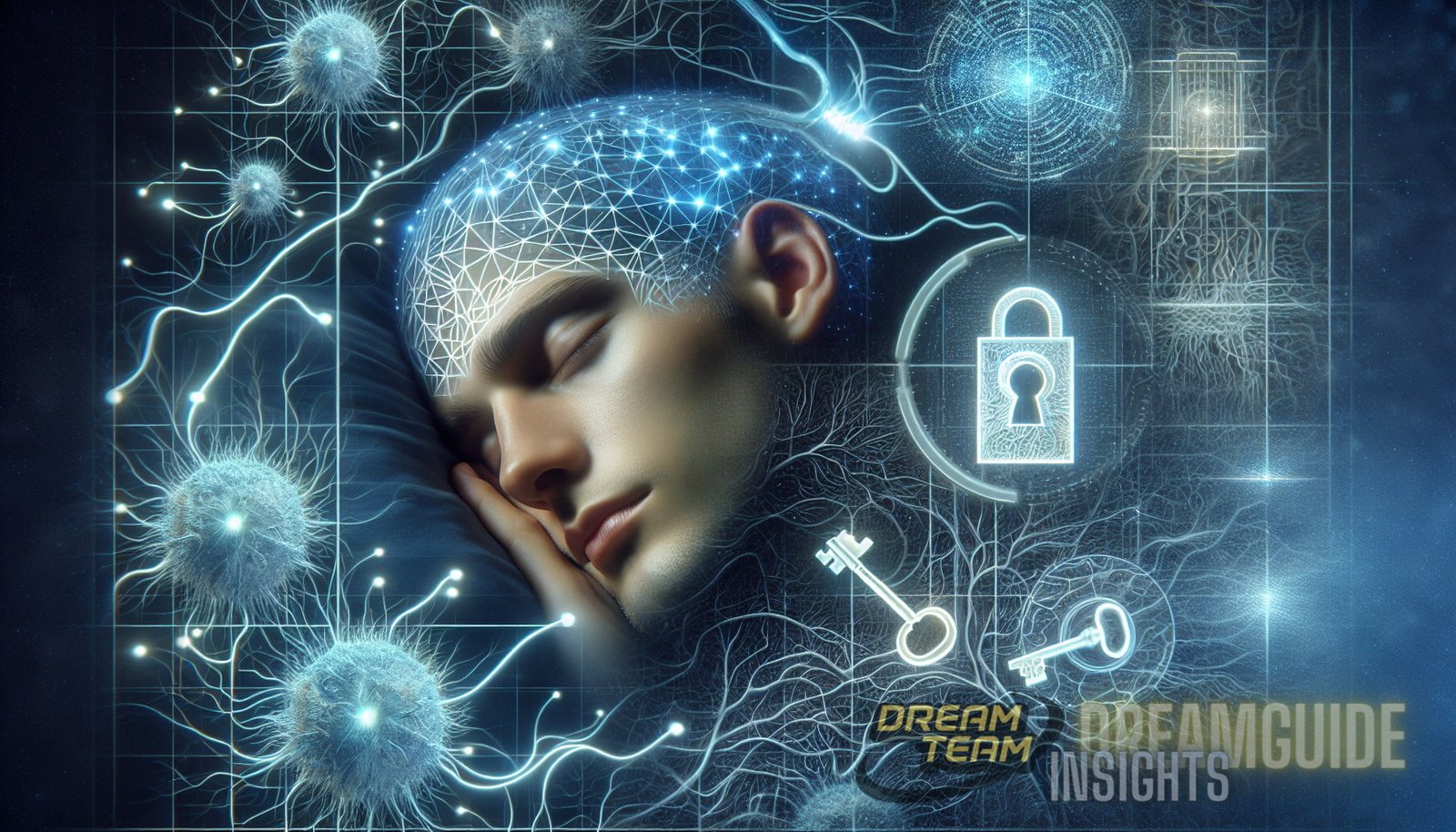Introduction
Dreams have long fascinated and intrigued us, leading to countless theories and interpretations throughout history. They provide a window into the subconscious mind, allowing us to explore landscapes, emotions, and experiences that may feel far removed from our waking lives. The analysis of dreams, also known as dream analysis, has been a subject of interest in the field of psychology for decades. In this article, we will delve deep into the cognitive processes behind dream analysis, striving to decode the intricacies of the sleeping mind.
An article available at https://dreamguideinsights.space/psychological-perspectives/dream-synchronicity/ provides valuable insights into dream synchronicity, offering a complementary perspective to this article.
The Importance of Dream Analysis
Dream analysis plays a vital role in understanding the complexities of the human mind. It allows individuals to explore their innermost thoughts, emotions, and conflicts, providing valuable insights into their psychological well-being. By unraveling the symbolism and hidden meanings within dreams, psychologists and therapists can help individuals gain a deeper understanding of themselves, their relationships, and their life experiences. Dream analysis can also be a useful tool in psychotherapy, as it allows therapists to create a safe space for clients to explore their dreams and uncover potential underlying issues.
The Cognitive Processes Behind Dream Analysis
To understand the cognitive processes behind dream analysis, it is important to first explore the nature of dreaming itself. When we sleep, our brains enter different stages of sleep, including REM (rapid eye movement) sleep. During REM sleep, our brains become highly active, and this is when dreaming occurs. Dreams are thought to be a result of the brain’s attempt to process and make sense of the information and experiences we encounter throughout our waking lives.
Dreams are full of symbolism and metaphorical representations of emotions and experiences. Analyzing dreams involves interpreting these symbols and understanding their underlying meanings. The process of dream analysis draws on various psychological theories and frameworks, such as psychoanalysis and cognitive psychology. Let’s explore some of the key cognitive processes involved in dream analysis:
1. Symbolism and Metaphor
Dreams often present information in the form of symbols and metaphors, rather than straightforward narratives. These symbols can represent various aspects of ourselves, our relationships, or our experiences. For example, dreaming about flying may symbolize a sense of freedom or liberation, while dreaming about snakes may represent hidden fears or anxieties. Interpreting these symbols requires a deep understanding of the individual’s personal experiences and emotions.
2. Memory Consolidation
Dreams also play a crucial role in memory consolidation. During REM sleep, the brain processes and consolidates memories from the day, transferring them from short-term memory to long-term memory. This cognitive process helps us retain information and make sense of our experiences. Dream analysis can, therefore, be a valuable tool in understanding the relationship between dreams and memory consolidation, shedding light on how this process impacts our emotional and psychological well-being.
3. Emotional Processing
Dreams are closely connected to our emotions, often reflecting our deepest desires, fears, and unresolved conflicts. Analyzing dreams can help individuals explore and process these emotions in a safe and controlled environment. By identifying the emotions present in dreams, psychologists and therapists can assist individuals in understanding and resolving emotional issues, leading to personal growth and improved psychological well-being.
4. Unconscious Thoughts and Desires
Dreams are believed to provide a glimpse into our unconscious thoughts and desires. By analyzing the content and themes of dreams, psychologists and therapists can uncover hidden desires, unresolved conflicts, and repressed memories. This process allows individuals to gain a deeper understanding of themselves and their motivations, facilitating personal development and self-acceptance.
The Role of Dream Analysis in Psychotherapy
Dream analysis plays a significant role in psychotherapy, particularly in psychodynamic approaches such as psychoanalysis. Psychodynamic therapy focuses on exploring the unconscious mind and how it influences thoughts, emotions, and behaviors. Dreams are considered to be a direct expression of the unconscious, making them a valuable tool in therapy.
Therapists trained in dream analysis work with clients to explore their dreams and interpret the symbols and themes present within them. This process helps individuals uncover unconscious thoughts and desires that may be influencing their current psychological well-being. By bringing these unconscious elements to conscious awareness, individuals can gain insight into their motivations, form healthier relationships, and resolve inner conflicts.
An article available at https://dreamguideinsights.space/psychological-perspectives/unlocking-the-secrets-of-subconscious-dreams-exploring-the-depths-of-our-nightly-visitors/ provides a comprehensive exploration of subconscious dreams and their significance
.Scientific Approaches to Dream Analysis
Over the years, several scientific approaches have been developed to analyze and interpret dreams. These approaches aim to provide a structured framework for making sense of the complex symbolism and hidden meanings within dreams. Let’s explore a few of the most prominent scientific approaches to dream analysis:
1. Psychoanalytic Approach
The psychoanalytic approach to dream analysis was pioneered by Sigmund Freud, the father of psychoanalysis. According to Freud, dreams are the “royal road to the unconscious,” offering insight into repressed desires and unresolved conflicts. Freud believed that dreams were a manifestation of the dreamer’s unconscious thoughts and desires, often disguised through symbolism and metaphor. He developed the technique of free association, wherein clients would freely associate to the images and events of their dreams, allowing for the uncovering of unconscious material.
2. Cognitive Approach

The cognitive approach to dream analysis focuses on understanding the thought processes involved in dreaming. It explores how our cognitive resources, such as attention, memory, and problem-solving abilities, influence the content and themes of our dreams. This approach considers dreams to be a reflection of our cognitive functioning and mental processes. Cognitive psychologists utilize various techniques, such as keeping dream journals and examining the cognitive patterns within dreams, to gain insights into the complex cognitive processes at play.
3. Gestalt Approach
The Gestalt approach to dream analysis emphasizes the holistic nature of dreams. It views dreams as a complete entity, rather than focusing solely on individual symbols or elements. The aim is to understand the overall meaning and message of the dream, considering the dream as a whole. The Gestalt approach utilizes techniques such as dream reenactment and role-playing to explore the different perspectives and emotions within the dream. By engaging with the dream in a creative and experiential manner, individuals can gain a deeper understanding of its underlying meanings.
The Influence of Culture on Dream Analysis
Dream analysis is intricately tied to culture and varies across different societies and belief systems. Cultural factors can shape both the content and interpretation of dreams, as well as the significance attributed to them. Let’s explore some ways in which culture influences dream analysis:
1. Symbolic Meaning
Symbols and their meanings can differ based on cultural contexts. For example, in Western cultures, a snake may symbolize deception, while in some indigenous cultures, it may represent wisdom or healing powers. Understanding the cultural symbolism within dreams is crucial for accurate interpretation and analysis.
2. Interpretation Techniques
Different cultures may employ distinct techniques and methods for analyzing dreams. For instance, some indigenous cultures engage in group dream sharing and interpretation, valuing collective insights and perspectives. In contrast, individualistic cultures may prioritize personal reflection and individual interpretation.
3. Spiritual and Religious Beliefs
Spiritual and religious beliefs can significantly impact the interpretation and significance attributed to dreams. In some cultures, dreams are seen as divine messages or the realm of supernatural beings. Religious texts and teachings may provide specific guidelines for understanding and interpreting dreams, shaping the cultural understanding of dream analysis.
Current Research in Dream Analysis
Dream analysis continues to be an active area of research in the field of psychology. Ongoing studies aim to further understand the cognitive processes involved in dreaming and the potential therapeutic benefits of dream analysis. Here are a few examples of current research in dream analysis:
1. Neuroscience and Dreaming
Neuroscience research has made significant strides in understanding the neural mechanisms behind dreaming. Advanced imaging techniques, such as fMRI (functional magnetic resonance imaging), have allowed scientists to explore the brain activity associated with dreaming. Researchers aim to uncover how specific brain regions and networks are involved in the generation and interpretation of dreams.
2. Dreaming as Problem-Solving
Some researchers propose that dreaming serves a problem-solving function. Dreams provide a platform for creative thinking and alternative perspectives, allowing individuals to explore potential solutions to real-life challenges. Ongoing research aims to explore the relationship between dreaming and problem-solving abilities, shedding light on the practical benefits of dream analysis.
3. Dream Analysis in Psychotherapy
Therapists and researchers continue to investigate the effectiveness of dream analysis in psychotherapy. Studies focus on assessing the therapeutic outcomes of incorporating dream analysis into treatment plans, comparing the efficacy of different approaches, and exploring the potential mechanisms underlying the benefits of dream analysis.
Conclusion
Dream analysis is a fascinating field that allows individuals to gain insight into their subconscious thoughts, emotions, and desires. By decoding the symbolism and hidden meanings within dreams, psychologists and therapists can help individuals better understand themselves and the underlying factors influencing their psychological well-being. The cognitive processes behind dream analysis involve exploring the symbolic nature of dreams, memory consolidation, emotional processing, and uncovering unconscious thoughts and desires. Dream analysis plays a crucial role in psychotherapy, providing a valuable tool for personal exploration and growth. As research continues to advance our understanding of dreaming, the field of dream analysis holds the promise of further insights into the depths of the human mind.


